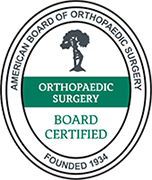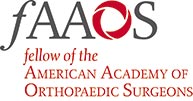
Anatomy of the Meniscus
Two wedge-shaped cartilage pieces are present between the thighbone and the shinbone. These are called menisci. They stabilize the knee joint and act as shock absorbers.
What is Partial Meniscectomy?
Partial meniscectomy is a surgical procedure to remove the torn portion of the meniscus from the knee joint.
What are Meniscal Tears?
Meniscal tears can occur at any age, but are more common in athletes playing contact sports. These tears are usually caused by twisting motion or over-flexing of the knee joint. Athletes who play sports, such as football, tennis, and basketball are at a higher risk of developing meniscal tears.
Symptoms of Meniscal Tears
You may have pain over the inner and outer side of the knee, swelling, stiffness of the knee, restricted movement of the knee, and difficulty in straightening your knee. If conservative treatments such as pain medications, rest, physical therapy and use of knee immobilizers fail to relieve pain, surgery may be recommended. Surgical treatment options depend on the location, length, and pattern of the tear.
Meniscectomy Procedure
There are two surgical procedures for meniscal tears: total and partial meniscectomy. In total meniscectomy, the entire meniscus is removed, but in partial meniscectomy, your surgeon will remove only the torn meniscus. Total meniscectomy will help in relieving symptoms, but because the entire meniscus is removed, the cushioning and stability between the joints will be lost. Hence partial meniscectomy is considered.
Partial Meniscectomy Procedure
Partial meniscectomy is performed with arthroscopy, where several small incisions are made around the knee. Through one of the small incisions, a miniature camera is inserted to view the inside of the knee. Tiny surgical instruments are inserted through other small incisions to repair the tear. During the procedure, the torn meniscus is removed and the remaining edges of the meniscus are smoothened so that there are no sharp ends. Any unstable fragments causing locking and catching sensation will also be removed.
Partial meniscectomy helps in restoring or maintaining knee stability and offers faster and complete recovery. After surgery, rehabilitation exercises may help to restore knee mobility, strength and improve range of motion.
Complications of Partial Meniscectomy
The possible risks and complications of partial meniscectomy include infection, bleeding, and injury to blood vessels or nerves.










